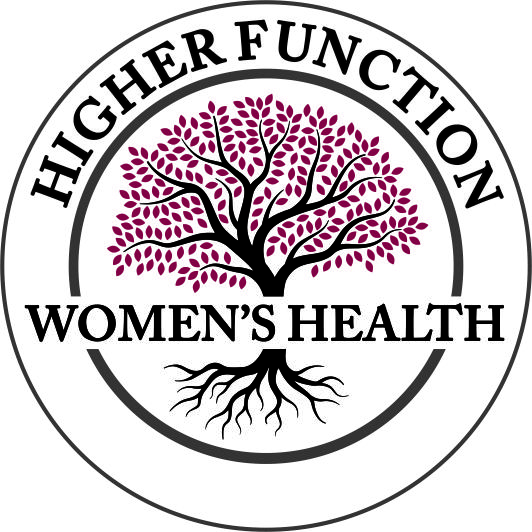Persistent Pain...It's More Than Tissue Damage
As a Pelvic Floor and Orthopeadic Physiotherapist, I obviously see a lot of patients with pain, and specifically in my field a lot of pelvic and low back pain. Chronic low back pain has now become the #1 disease world wide and 1 in 8 Canadians report having a chronic back problem.
So this is a topic that I have been wanting to write about for a long time. I believe this to be extra important information right now given the time of year, as the holidays can be quite stressful and emotional for many. As I will explain, stress and emotions can be feeding into our pain experience. (Oh and lets not forget the pandemic we are challenged with that is heightening emotions for many!) I also believe this information is important to share since we, patients and health care providers alike, are still talking about pain under an old lens and potentially making issues worse, or at least not better. This “new” approach, which is shrouded in years of research, challenges our current beliefs of what we think is going on in our bodies when we are experiencing pain. The research is screaming at us to understand that pain is not just about tissue damage or mechanics, and that we must take a broader approach to account for factors that may be driving pain.
To begin, let’s dissect the definition of pain. Pain, as defined by the IASP (International Association of the Study of Pain) is, “an unpleasant sensory AND emotional experience associated with ACTUAL or POTENTIAL tissue damage, or described in terms of such damage.”
Take a moment and really think about what some of those words are saying. The first part is that there are sensory factors (such as pressure, temperature, and chemical) AND emotional (fears, the context of when the pain started, beliefs etc) that make up a persons pain experience. Not one or the other, but both! So for instance, you may have actually strained your back muscles while lifting something heavy, but if you have also been told that those tissues will never heal or that you have to be careful lifting anything heavy again, then that fear, or emotion, can also contribute to that pain experience.
The second part of the definition talks about ACTUAL or POTENTIAL damage. This is implying that there does not have to be actual tissue damage for a person to experience pain. An example of actual tissue damage is cutting your finger or spraining your ankle, and that is the pain that makes the most sense to us. But what about potential damage? Well, take a moment and use your one hand to pull your other index finger back. If you keep pulling you start to feel pain, but do you believe you have actually damaged your finger? No, the pain that you are feeling is your brains message to say, “stop, if you keep going there is risk of damage.” Pain can be our body’s way of protecting us. Unfortunately, when there is persistent/chronic pain, the body is just doing too good of a job!
As we can see from this definition, when a person is experiencing persistent pain, which is pain lasting longer than 12-16 weeks, we cannot only take a medical approach to improving ones pain. We have to consider multiple factors, and this is what we call a biopsychosocial approach- bio = the tissues, physiology, etc; psycho = the mental and psychological state of the person; and social = the context of the persons life, ie job, children, activities etc. These factors can all influence pain.
One of the things we can also see when there is persistent pain, typically as a result of these psychosocial factors, is a heighten nervous system. This is what we call Central Sensitization (CS) and is defined by the amplification of nerve signals within the central nervous system (nerves, spinal cord, brain), which elicits pain hypersensitivity. In simple terms, all of your switches are turned up! Your body’s threshold is more sensitive and even things such as light touch can become painful.
It is important to say at this point that an entire book could be written on pain education and the physiology behind it. This is a very brief and simple explanation, but one that hopefully begins to challenge your thoughts. If you would like some more information here are a couple of resources that can also be helpful.
https://www.aptei.ca/wp-content/uploads/the-pain-truth-e-book-2020.pdf
Book: Explain Pain, by D. Butler and L. Moseley
In regards, to back pain, we are finding out that there can be other contributing factors aside from just back tension or degeneration. In a recent study by Vandyken et all (2019) they studied chronic low back pain in women and found a correlation of overactive (or tight) pelvic floors and constipation (which is often associated with a heightened nervous system). We also know from recent research on pregnant women who experience pelvic pain pre and post-partum that the degree of relaxin (a hormone that softens ligaments) is not correlated to the degree pain pain that a woman experiences (Bjorklund et al. 2000). Rather, research has found that it is their fears, birth trauma and stress which can be more significant factors to their pain. (Clinton et al 2017) The research is indicating that we must start looking beyond the tissues when we are treating persistent pain!!!
So with all this information in front of us, what can we do to help persistent pain- where do you even begin?
My first suggestion, is seeking help from a health professional that can hear your story and help identify any markers that may be contributing, as well as having a thorough physical assessment. Listening is one part, but thankfully also using many scientifically validated questionnaires can help to identify (not diagnose) certain factors such as heightened stress, anxiety and depression, catastrophization, fear of movement, sleep issues, sensitive nervous systems, and more, that may be contributing. By starting here it can help to direct you and your health care provider in the right direction.
Then you need strategies to help manage any of those heightened factors. Elevated stress and anxiety are typically seen in persistent pain, and can feed into that central sensitization. You can dampened the effects of stress and anxiety by most any input that calms your nervous system, for instance, massage, yoga, mindfulness, meditation, journaling, and Qi Gong. These are all practices that can help stimulate your parasympathetic nervous system (the “rest and digest” response) and counter the sympathetic nervous system (the “fight or flight” response) that is in overdrive. Note, if you feel that your stress and anxiety are severe then seeking more professional help and counselling may be needed.
Poor sleep is another common contributor to a sensitive nervous system. Making sleep a priority and creating healthy bedtime habits and a consistent sleep routine can provide your body the much needed rest and recovery to conquer the next day. If your system is depleted it can b more challenging to meet the physical and emotional demands of life.
Finally, addressing any movement fears and limitations is also very important. Stretching, yoga, pilates, and strengthening are all fabulous avenues, but you may also need to take a step back and go to movements that are even more gentle and novel so that your body can experience movement without pain. Sending your brain positive messages that it can move with ease helps set good pathways from the brain to tissues. Again, you health care provider can help guide you through these appropriate movements.
So there you have it! I hope I have given you some new knowledge of your body and if you’re struggling with persistent pain, some deeper understanding of what may be driving it. Regardless if your’e dealing with pain or not, I think the strategies I outlined above are valuable for all. These are stressful and challenging times so take some extra care to fill your cup, nourish your body, move, get outside and start the year off on the right track.
By Laura Powers, RPT
Owner of Higher Function Women’s Health



